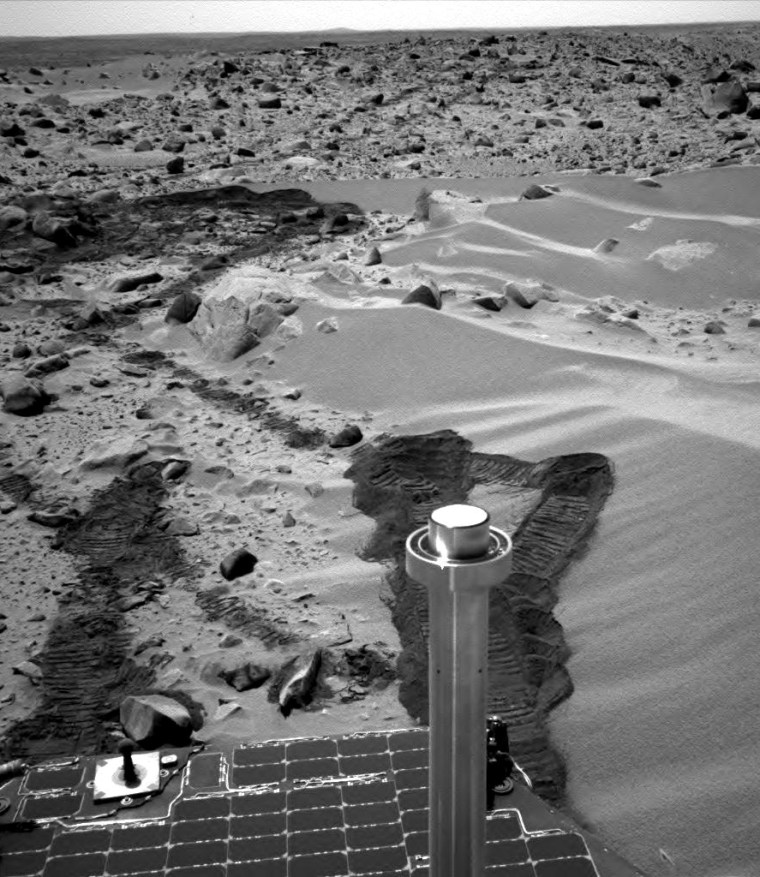The Spirit rover went for a lengthy drive along the rim of a Martian crater in its latest outing, scuffing up soil and taking ground and sky measurements, NASA said Friday.
The rover covered a total of 112½ feet (34.3 meters) along the edge of Bonneville crater before its day ended at 6:25 a.m. PT, NASA's Jet Propulsion Laboratory said in a statement.
Scuffing allows the rover's instruments to make observations of the soil just beneath the surface. It is accomplished by stopping the six-wheeled robot and having it spin one wheel in place.
Scientists used the technique to find out whether the drifts they saw along Bonneville's rim were made up of sand or dust. They found that the particles making up one of the drifts, nicknamed "Serpent," were significantly finer than earthly sand — in fact, more like silt or dust.
"Earth-based tests that simulate the wind speed and atmospheric density of Mars have found it difficult to reproduce dunes with grain particles as small as those found in the Serpent drift," NASA said in a commentary on the latest images. "However, Earth-based tests cannot duplicate the gravity of Mars, which is one-third that of the gravity on Earth. This environmental factor is a likely contributor to the diminutive material making up Serpent drift."
Spirit was sent to Bonneville crater in hope that it would give geologists a view of rocks churned up from below the Martian surface by the impact that created the depression.
But scientists say the rocks they see from the rim appear the same as rocks already encountered outside the crater, and there doesn't appear to be a reason to send the rover down into Bonneville. They plan to instead have Spirit work its way toward distant hills that may be more promising.
Spirit landed in the vast Gusev Crater region of Mars on Jan. 3. It was followed on Jan. 24 by its twin, Opportunity, which set down on the other side of the planet in a region called Meridiani Planum.
On Friday, Opportunity finished conducting scientific observations on the second of five soil targets scheduled for study, then drove 16 feet (5 meters) to the third target. The rover is getting ready to leave the crater where it landed and head out across the surrounding plains.
The $820 million mission has found evidence that water once flowed through rocks at the Meridiani site and was present, in small amounts, at the Gusev site.
The rovers carry panoramic and microscopic imaging cameras, cameras for navigation and hazard detection, and spectrometers to determine mineral composition and elements of rocks and soil. One spectrometer also can make temperature profiles of the Martian atmosphere.
